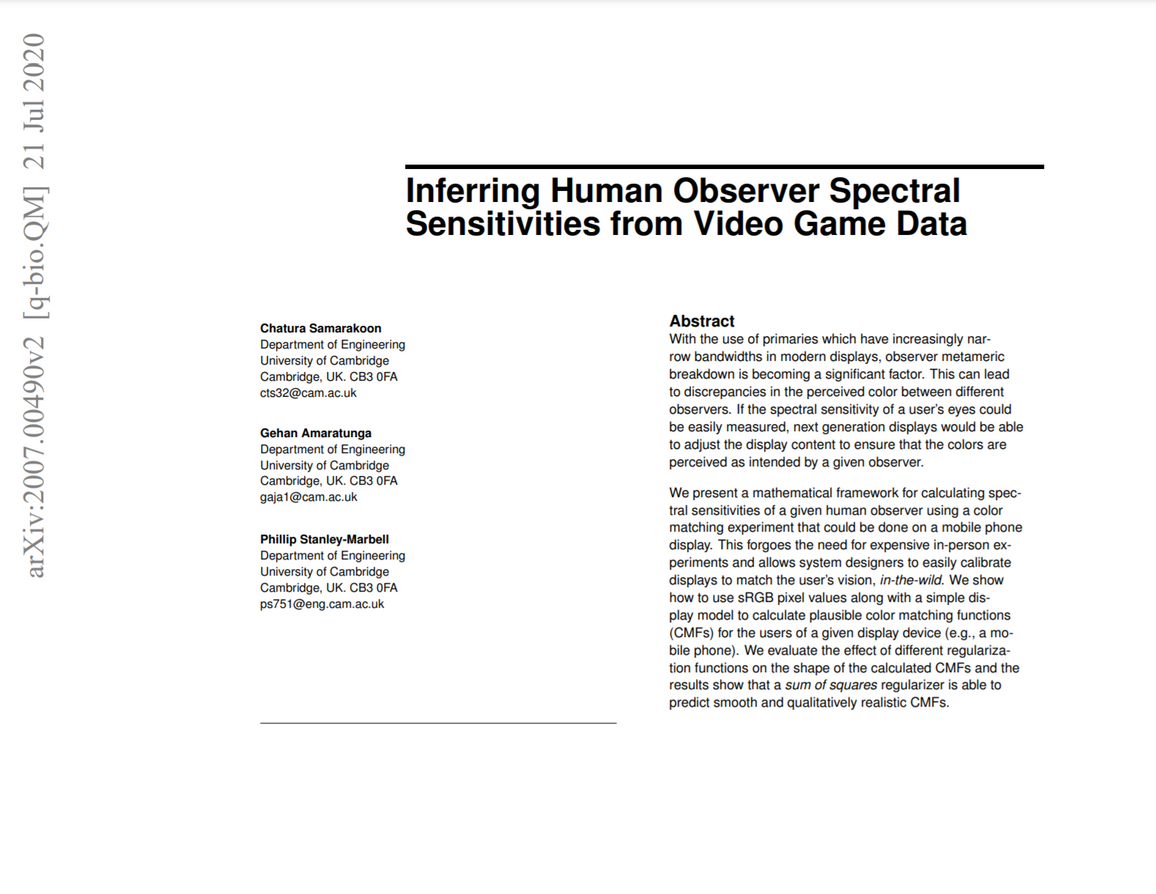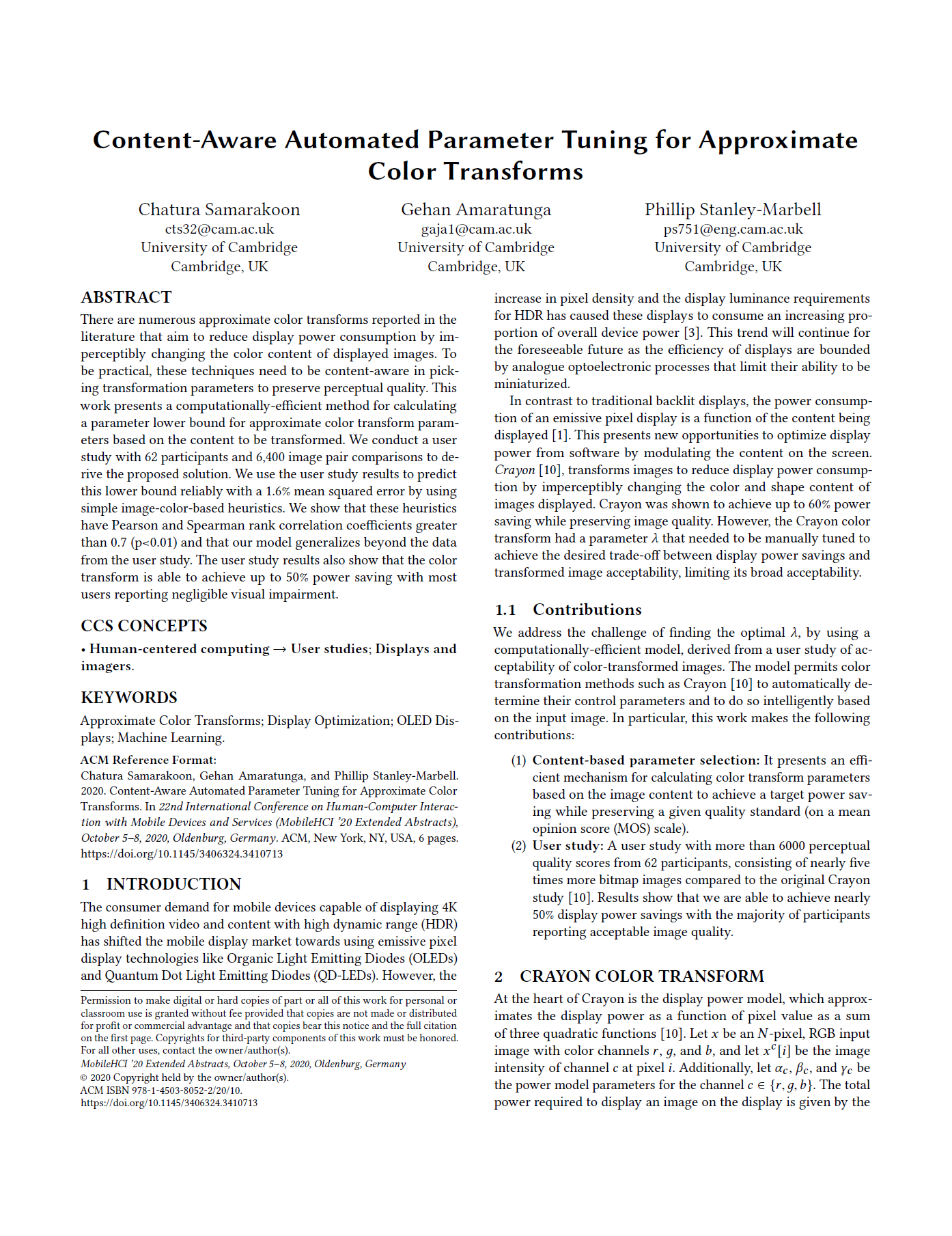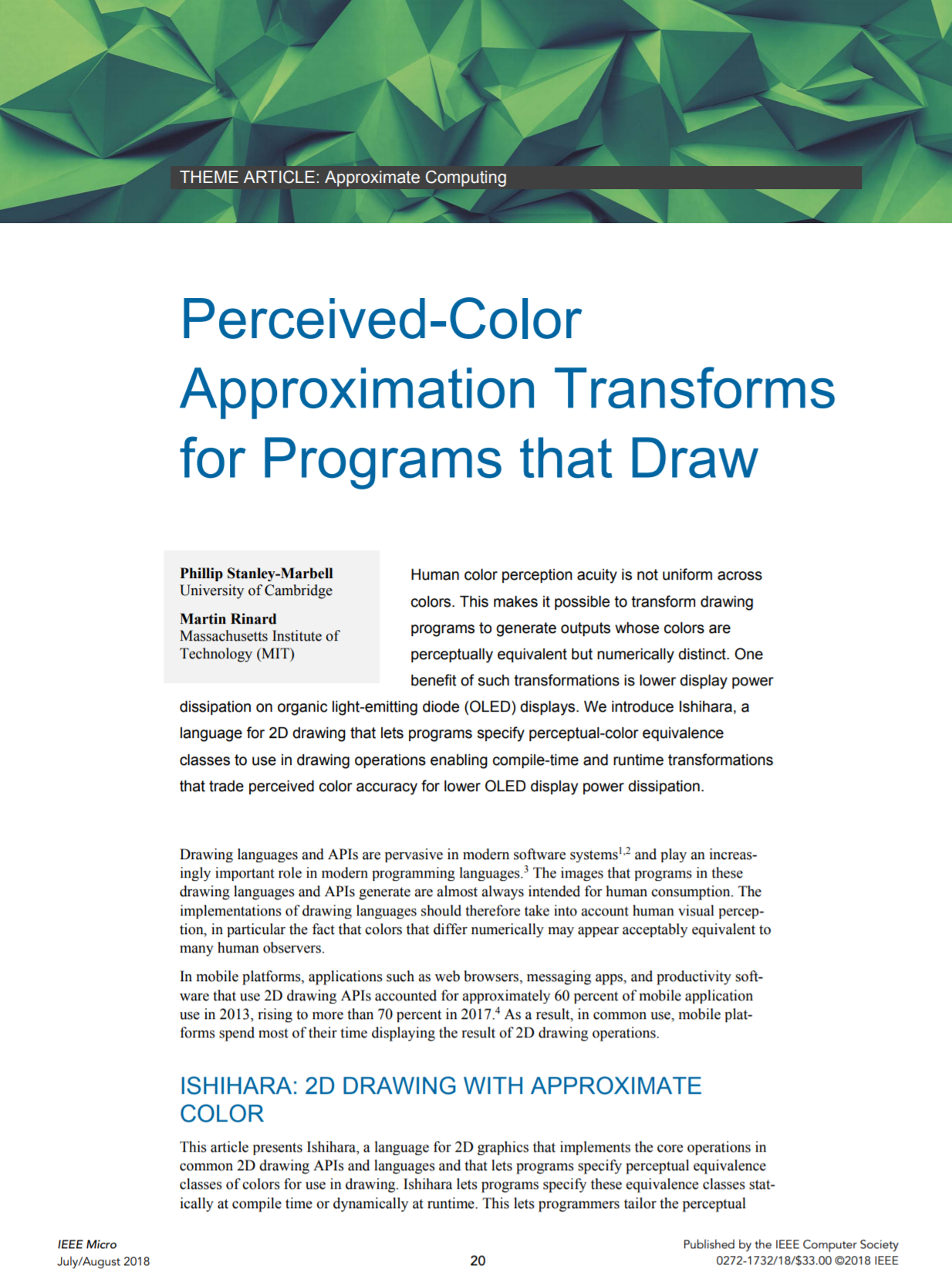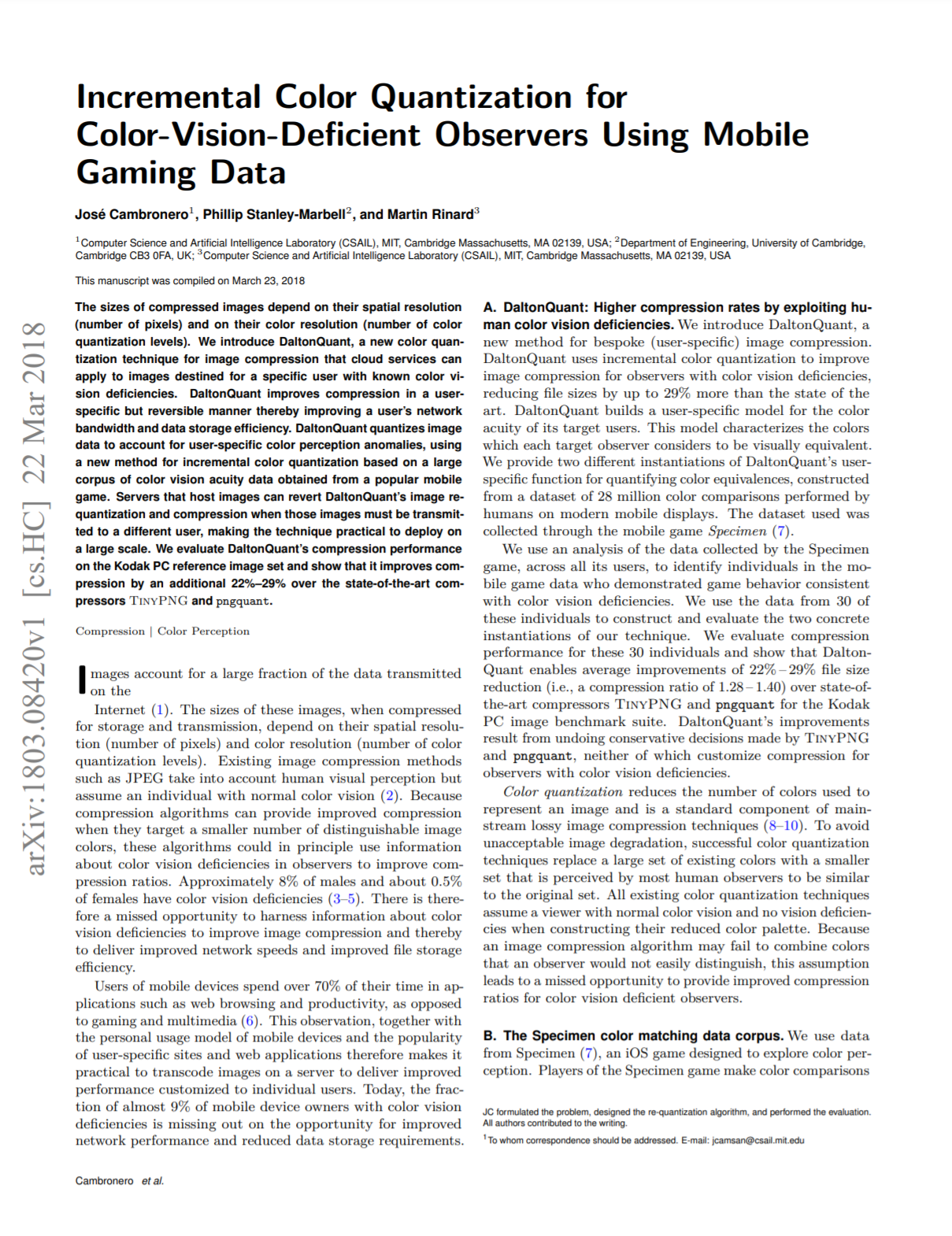Inferring Human Observer Spectral Sensitivities from Video Game Data


Abstract
With the use of primaries which have increasingly narrow bandwidths in modern displays, observer metameric breakdown is becoming a significant factor. This can lead to discrepancies in the perceived color between different observers. If the spectral sensitivity of a user's eyes could be easily measured, next generation displays would be able to adjust the display content to ensure that the colors are perceived as intended by a given observer. We present a mathematical framework for calculating spectral sensitivities of a given human observer using a color matching experiment that could be done on a mobile phone display. This forgoes the need for expensive in-person experiments and allows system designers to easily calibrate displays to match the user's vision, in-the-wild. We show how to use sRGB pixel values along with a simple display model to calculate plausible color matching functions (CMFs) for the users of a given display device (e.g., a mobile phone). We evaluate the effect of different regularization functions on the shape of the calculated CMFs and the results show that a sum of squares regularizer is able to predict smooth and qualitatively realistic CMFs.
Cite as:
Chatura Samarakoon, G. Amaratunga, and P. Stanley-Marbell. 2020. Inferring Human Observer Spectral Sensitivities from Video Game Data. arXiv:2007.00490. Retrieved from https://arxiv.org/abs/2007.00490.
BibTeX:
@misc{samarakoon2020inferring,
title={Inferring Human Observer Spectral Sensitivities from Video Game Data},
author={Chatura Samarakoon and Gehan Amaratunga and Phillip Stanley-Marbell},
year={2020},
eprint={2007.00490},
archivePrefix={arXiv},
primaryClass={q-bio.QM}
}





